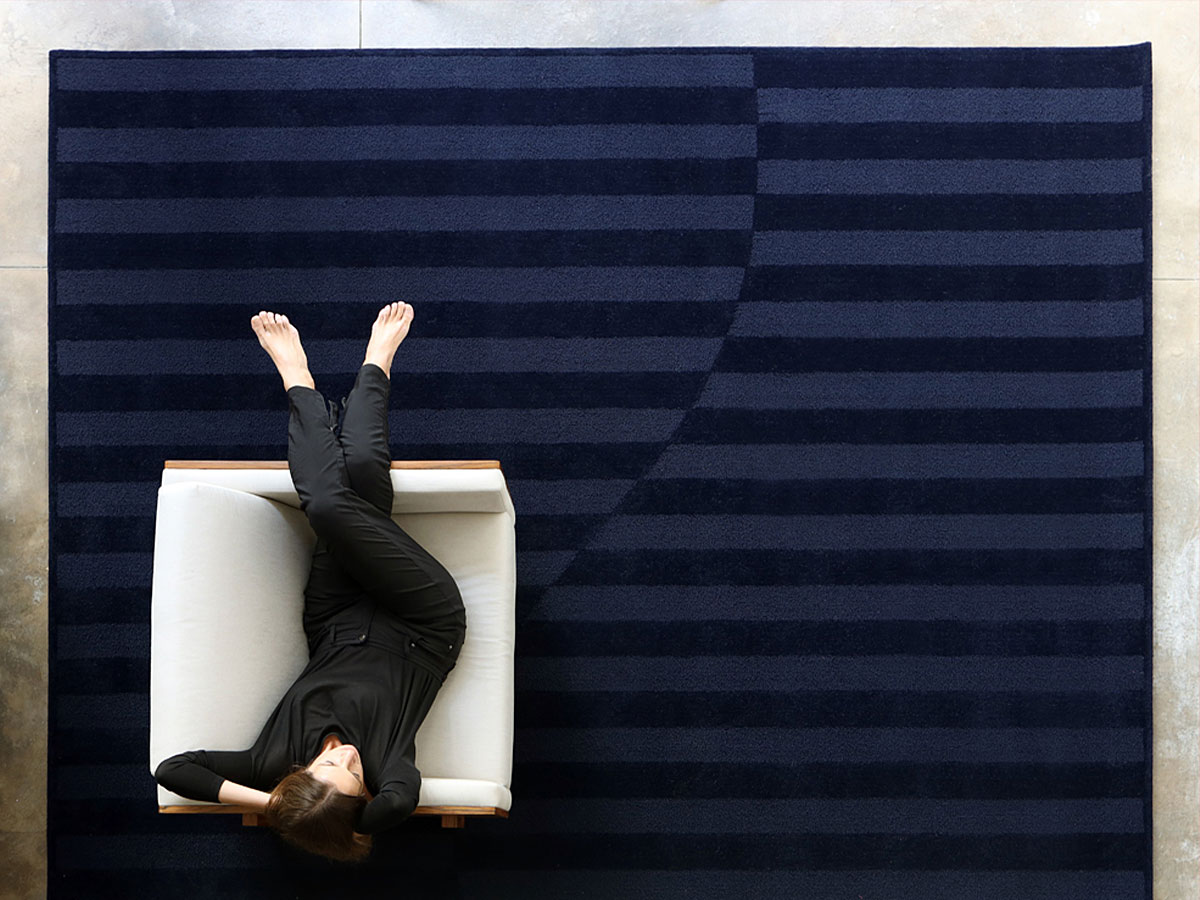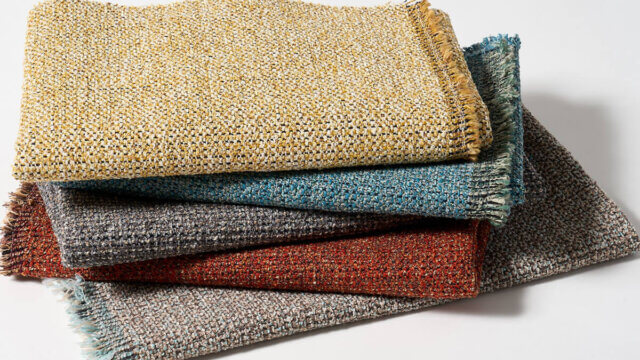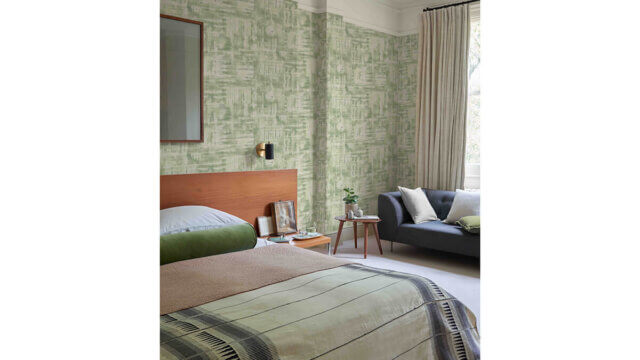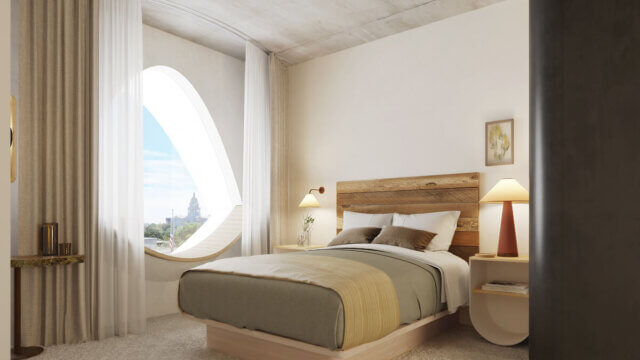Whether as accent pieces or full flooring, carpets and rugs can set the design tone for a room, all while offering a soft spot for your feet.
Minus Collection
Aquafil has partnered with Punto e Filo to launch a collection of nine pieces that bring the possibility of multiple combinations of colors and sizes.
The Minus collection was designed by Alessandra Delgado for Punto e Filo Rugs. The name originates from Latin and means “less.” This evokes the perfect concept of minimalist elegance that modernist master Mies Van Der Rohe eternalized with the iconic phrase “less is more.”
For these pieces, Delgado was inspired more specifically by great names of Brazilian modernist architecture, such as Oscar Niemeyer, Lina Bo Bardi, Burle Marx and Paulo Mendes da Rocha.
“We love seeing our Econyl regenerated nylon being used in innovative ways, especially now being sourced by an inventive company like Punto e Filo, which allows the customization of rugs, handmade one by one, to look like real paintings,” said Giulio Bonazzi, chairman, Aquafil. “Between the freshness and sensibility of the Minus collection, we’re thrilled to see such a high-design product come to life with our sustainable material.”
The collection includes nine pieces that bring the possibility of multiple combinations of colors and sizes, manufactured exclusively by the traditional Punto e Filo.
With lightness, each piece of the collection tells a little bit of Brazilian modernist history and their main names. Pompéia is inspired by the organic cracks of concrete in the frontage of the cultural center Sesc Pompéia, a great work of architect Lina Bo Bardi. Both inspired by Niemeyer, the Alvorada reinterprets the architecture of Brasília, and the Oscar brings out the eternal curves of the famous architect Oscar Niemeyer. The traces of Marx suggests the gardens of the artist Burle Marx; straight lines inspire Lina (shown above); and Paulicéia brings a touch of urbanism to the atmosphere.
SweaterKnit & Gabardine Commercial Carpet Collection
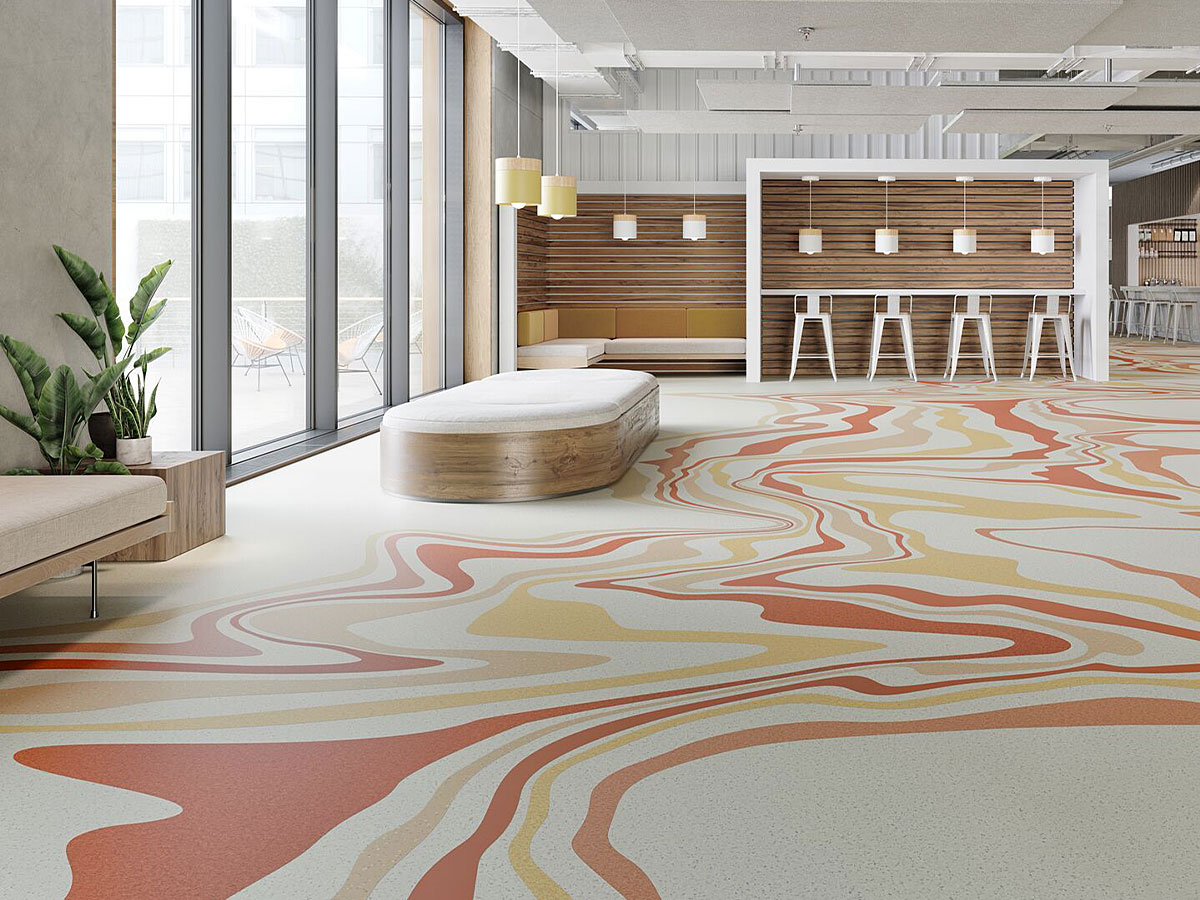 In an age of constant digital connectivity, the new SweaterKnit and Gabardine carpet collection from Tarkett seeks to bring the tactile comforts of home into modern commercial spaces.
In an age of constant digital connectivity, the new SweaterKnit and Gabardine carpet collection from Tarkett seeks to bring the tactile comforts of home into modern commercial spaces.
Available in Powerbond (Gabardine only) and modular carpet tile, the collection was designed to invoke the sense of calm and acceptance we experience in our homes, creating inviting spaces people will feel comfortable returning to time and again.
The collection’s highly textured surfaces, softened color palettes and bespoke accessories create warm and welcoming environments for people who have unlimited options for where they choose to work, play, dine and shop. SweaterKnit and Gabardine are designed for this craving of security and harmony—offering complementary styles that bridge the distance between workplace and work/life.
“When we began the design process for SweaterKnit and Gabardine, we were already seeing signs that commercial interiors were beginning to lack warmth and familiarity,” said Misty Lewis, design director, Tarkett. “It was our intention to create a collection that felt warm and comfortable, like a favorite sweater. We began the process over a year ago, not knowing that personal comfort and well-being would become even more important as we navigate the changing tide of 2020. This collection feels more relevant now than ever.”
SweaterKnit (available in modular tile) imbues a sense of luxurious comfort, enveloping visitors with full, soft texture and the permission to escape for a moment of quiet reflection. Gabardine (available in Powerbond and modular tile) provides the perfect balance with a structured flat weave that represents our need to be focused, efficient and productive.
Colors and Telares
Nanimarquina has introduced two new collections designed by company founder Nani Marquina.
Colors is reminiscent of nature’s beauty, with a palette that includes Nectar, Blush, Saffron and Basil—each bright and bold to make a statement, and the colors can also adjust the ambiance of the space. When combining rugs, one of the most important rules to keep in mind is that it’s best to place the thinnest rug underneath to avoid sudden changes in height. The plain hues and thinness of Colors allows one to create unlimited combinations.
“I wanted to work with vibrant colors for a new collection of plain dhurries; they have to have the capacity to uplift the rooms and be easy combinable with other styles, specifically with the Flora collection, another novelty of 2020,” said Marquina. “And I ended up with an abstract interpretation of nature’s colors: Nectar, a warm yellow; Blush, a deep pink; Saffron, a strong red; and an earthy green called Basil.”
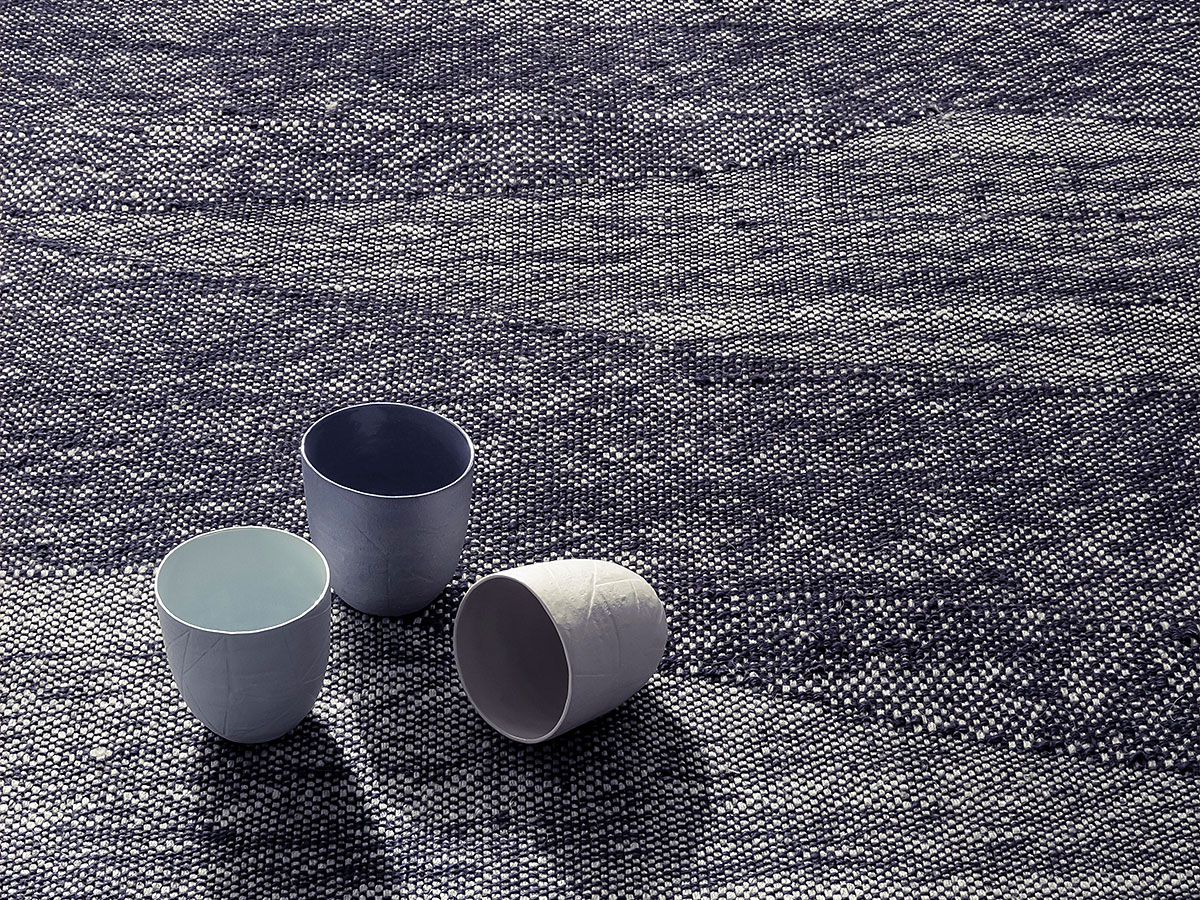 Telares (shown) was born from innovative thinking of what techniques a loom can perform. During the design process, the nanimarquina team played with the weft and warp, creating tension to show changes in pattern and to give the rug an appearance full of nuances. Telares’ rustic appearance and irregularities of the wool used result in a unique rug that allows one to appreciate the beauty and authenticity of craftsmanship. Its characteristic curly fringes are noteworthy. Available in five colors, each model seeks a range of contrasts with the combination of natural and saturated color.
Telares (shown) was born from innovative thinking of what techniques a loom can perform. During the design process, the nanimarquina team played with the weft and warp, creating tension to show changes in pattern and to give the rug an appearance full of nuances. Telares’ rustic appearance and irregularities of the wool used result in a unique rug that allows one to appreciate the beauty and authenticity of craftsmanship. Its characteristic curly fringes are noteworthy. Available in five colors, each model seeks a range of contrasts with the combination of natural and saturated color.
“We created the design of this kilim directly on the loom, without the need for previous sketches. We worked intuitively, imitating the work of the craftsman,” she said. “Allowing the texture to speak for itself, the shapes were defined in a natural, unconscious way. Telares is a kilim to contemplate. Filled with irregularities, this is a tremendously expressive rug.”
All The Way
Ligne Roset has introduced All The Way by Portuguese designer Susana Godinho. It intertwines raw and recycled materials with cork to create a one-of-a-kind rug. Each rug is hand-woven, harmoniously evoking a sense of craft and contemporary design.
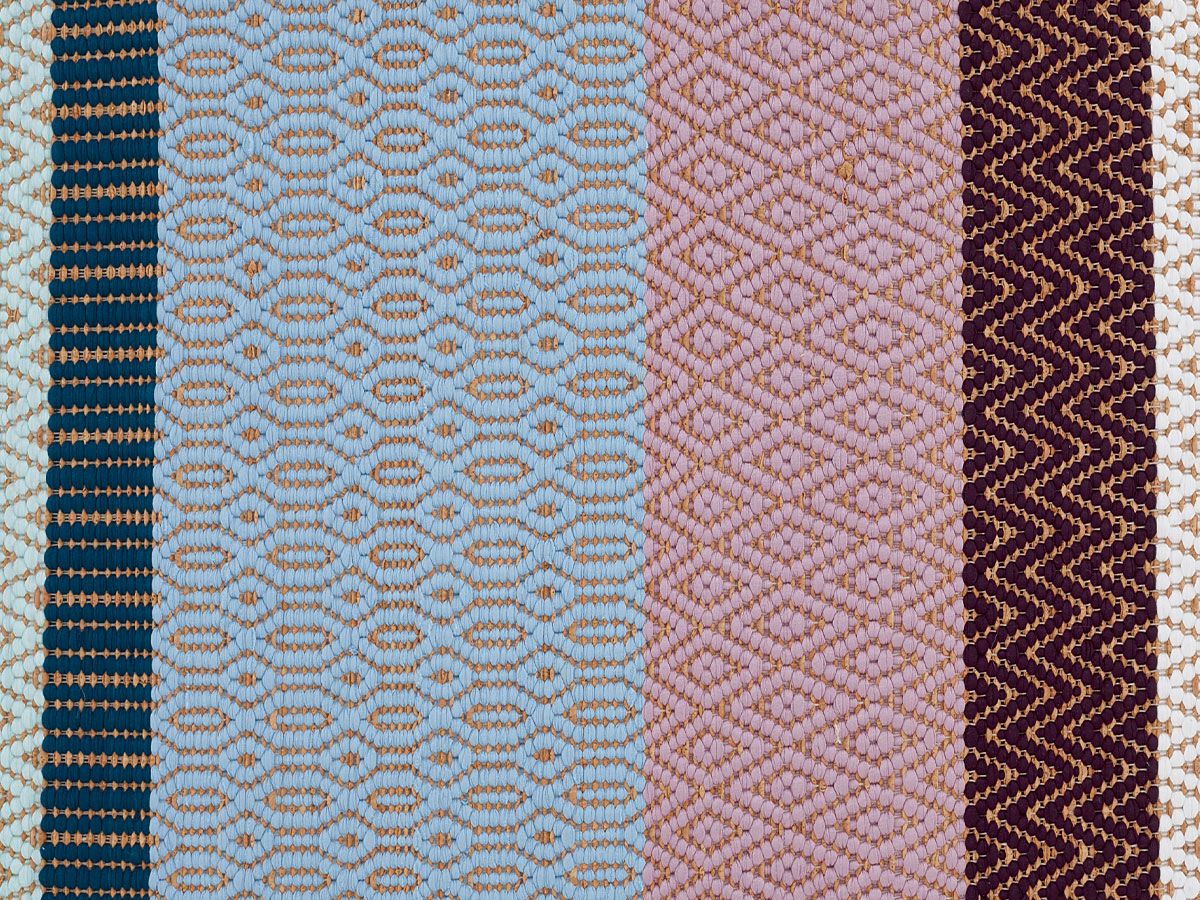 Combining the origins of Portuguese traditional weaving techniques with recyclable cork, natural linen and upcycled cotton jersey from clothing offcuts, Godinho was able to answer the market’s demand for more environmentally friendly design, without sacrificing style. Woven across the weft of the rug, Godinho chose to use cork not only because it’s a natural and recyclable raw material, but also because of the many positive characteristics that it can bring to a design.
Combining the origins of Portuguese traditional weaving techniques with recyclable cork, natural linen and upcycled cotton jersey from clothing offcuts, Godinho was able to answer the market’s demand for more environmentally friendly design, without sacrificing style. Woven across the weft of the rug, Godinho chose to use cork not only because it’s a natural and recyclable raw material, but also because of the many positive characteristics that it can bring to a design.
“Incorporating natural cork in the creative process created a visually distinctive design language,” she said. “Besides, cork offers numerous performance benefits such as durability, thermal and acoustic insulation, lightness, comfort and minimization of the risk of allergies.”
Inspired by her personal experiences and travels, the colors of each rug are pale tones. The color palette, while not exactly the same on each rug, because it depends on the upcycled clothing, is in general exclusive to Ligne Roset.
